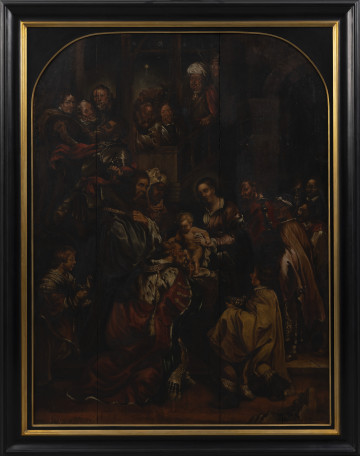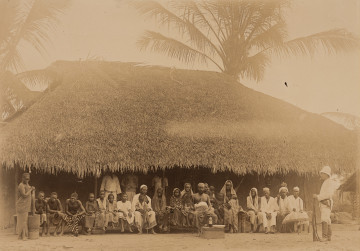
The Adoration of the Magi
circa 1657 — 1680
National Museum in Szczecin
Part of the collection: European classics of modernity
After studying in Vienna and Paris, Edward Wittig himself began teaching. From 1914, he lectured at Warsaw universities: the Polytechnic (until 1918) and the School of Fine Arts (until 1920). His credo of monumental art, characterized by static composition and simplification of compact volume, was contained in his Odczycie o rzeźbie [The Lecture on Sculpture] (1915). The postulate that all parts of a work of art should be subordinated to the general structure, and that they should be exposed according to the laws of construction, resonated with the definition of a classical work of art (i.e. opposed to Baroque expression) published the same year by Heinrich Wölfflin. Wittig's view of the need for rhythmisation in the work of plastic arts became close to his moderately modern colleagues, gathered from 1922 in the Association of Polish Artists Rytm. It was mainly this circle that received the most lucrative state commissions and shaped the official iconosphere of the Second Republic. Wittig realised a number of monuments at that time. The statue of Umierającego żołnierza [The Dying Soldier] (1926, Warsaw) evolved from the three-figure Walka [The Fight] (1916). Between 1923 and 1932, the monument of Lotnik [The Aviator] was created in the capital, enthusiastically received by international critics. The equestrian portrait of King Władysław III Warneńczyk (designed 1928-1929) was commissioned by the Polish-Bulgarian Society, which in the interwar period took care of the place where the Polish king died. In 1935 Julian Ambroziewicz and Antoni Miszewski arranged an architectural cenotaph in the so-called Warneńczyk Mound near the battlefields of Varna, a figural monument to the ruler depicting not a warrior splashed with blood, not a leader and hetman, but the king himself, a ghost king, wielding the purity of his soul and the loftiness of his ideas. (Władysław Kozicki, Edward Wittig. Wystawa zbiorowa [Edward Wittig. Collective Exhibition], Lviv 1932, p. nlb.), which was to stand in the centre of the Black Sea city. A bronze cast of the model of this monument, which has not been realised to this day, was placed in the collection of the National Museum in Szczecin after the Second World War.
Szymon Piotr Kubiak
Author / creator
Dimensions
cały obiekt: height: 86 cm, width: 77 cm
Object type
sculpture
Creation time / dating
Creation / finding place
Identification number
Location / status

circa 1657 — 1680
National Museum in Szczecin

1560 — 1610
National Museum in Szczecin

1893 — 1900
National Museum in Szczecin
DISCOVER this TOPIC
Museum of King Jan III's Palace at Wilanów
DISCOVER this PATH
Educational path